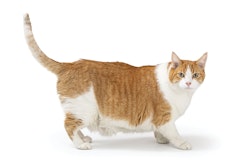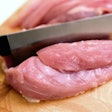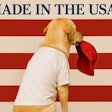
OPINION
By Dana Waters, Manager of International Affairs, Pet Food Institute
The U.S. pet food industry made notable strides in reclaiming its position in the international market in 2024 despite experiencing setbacks in 2023. Exports grew by 3.7%, reaching $2.49 billion, signaling renewed momentum in key global regions.
Much of this rebound was driven by a strong resurgence in Asia, particularly China and Southeast Asia, where demand recovered significantly. China, which saw a 2.5% decline in U.S. pet food imports in 2023, bounced back with an impressive 15% increase in 2024, totaling $296 million—reaffirming its role as a critical market. Meanwhile, Southeast Asia, which had previously faced steep declines in pet food imports from the U.S. due to inflation and other economic factors, posted a 7.5% growth in 2024.
As for the top three markets, Canada remains the top export market, with $1.2 billion in U.S. pet food imports—although the regained traction in China may have slowed Canada's growth rate. Mexico has maintained the third-largest market position with $234 million in imports.
Despite these encouraging developments, the U.S. pet food industry remains aware of the challenges ahead in 2025. Beyond the broader trade concerns surrounding tariffs on steel and aluminum, industrial goods and agricultural exports, U.S. pet food makers remain particularly vulnerable to trade disputes. Retaliatory tariffs on U.S. animal-based ingredients or finished pet food products could create additional cost burdens for manufacturers, potentially reducing competitiveness in key international markets. Because Canada, China and Mexico collectively account for 70% of U.S. pet food exports, disruptions to these trade relationships would pose significant challenges for sustained growth.
While these factors introduce new risks for 2025 and beyond, PFI remains committed to working alongside allied organizations and government partners to maintain the progress achieved in 2024. The recent introduction of the Agricultural Export Promotion Act in January 2025 is an encouraging step toward strengthening U.S. agricultural exports, including pet food. By securing investment in the Market Access Program (MAP), in which PFI proudly cooperates, this legislation supports the industry’s efforts to remain competitive globally with strategic support and advocacy.
Addressing regulatory barriers in key markets also remains a priority, and PFI has secured funding through USDA's Regional Agricultural Promotion Program (RAPP) to support these efforts. At the same time, PFI remains a proud collaborator in the MAP program, supporting U.S. pet food exports in 19 countries. Notably, 18 of these 19 countries were among the top 35 export markets for U.S. pet food in 2024—an increase over the previous year. This sustained engagement highlights the effectiveness and necessity of industry partnerships in maintaining and expanding market access amid an evolving trade landscape.
Through these programs, PFI has an excellent working relationship with USDA’s Foreign Agriculture Service (FAS) on various trade-related issues and through the promotional activities conducted under market access programs that help support U.S. pet food exports. Additionally, PFI and USDA’s Animal and Plant Health Inspection Service (APHIS) work closely through standing meetings and annual workshops. These partnerships have successfully aided in expanding access to international markets, and PFI is confident that this cooperation will continue to support growth in 2025.
To ensure continued access to global markets remains a priority for the industry, Pet Food Institute (PFI) plays a leading role in The Global Alliance of Pet Food Associations (GAPFA), which recently reaffirmed the safe trade of extruded dry pet food in heat-treated poultry products amid highly pathogenic avian influenza (HPAI) outbreaks by reinforcing science-based trade policies and advocating against unnecessary trade restrictions.
The organization will continue to promote adherence to international standards by the World Organization for Animal Health (WOAH) member countries. PFI will actively advocate for the continued trade of pet food that meets the WOAH safe commodity standards should the U.S. choose to use vaccination to control HPAI.
For the U.S. pet food industry, the 2025 outlook is balanced with progress and uncertainty. Significant gains in key global markets in 2024, specifically in China and Southeast Asia, have demonstrated strong demand and resilience. However, lingering regulatory barriers and newer challenges, like looming tariffs and broader trade uncertainties, remain critical to watch.
As the trade landscape shifts, PFI remains cautiously optimistic that the foundation of strong partnerships, proactive engagement, and a commitment to innovation will ensure that growth will continue.

















